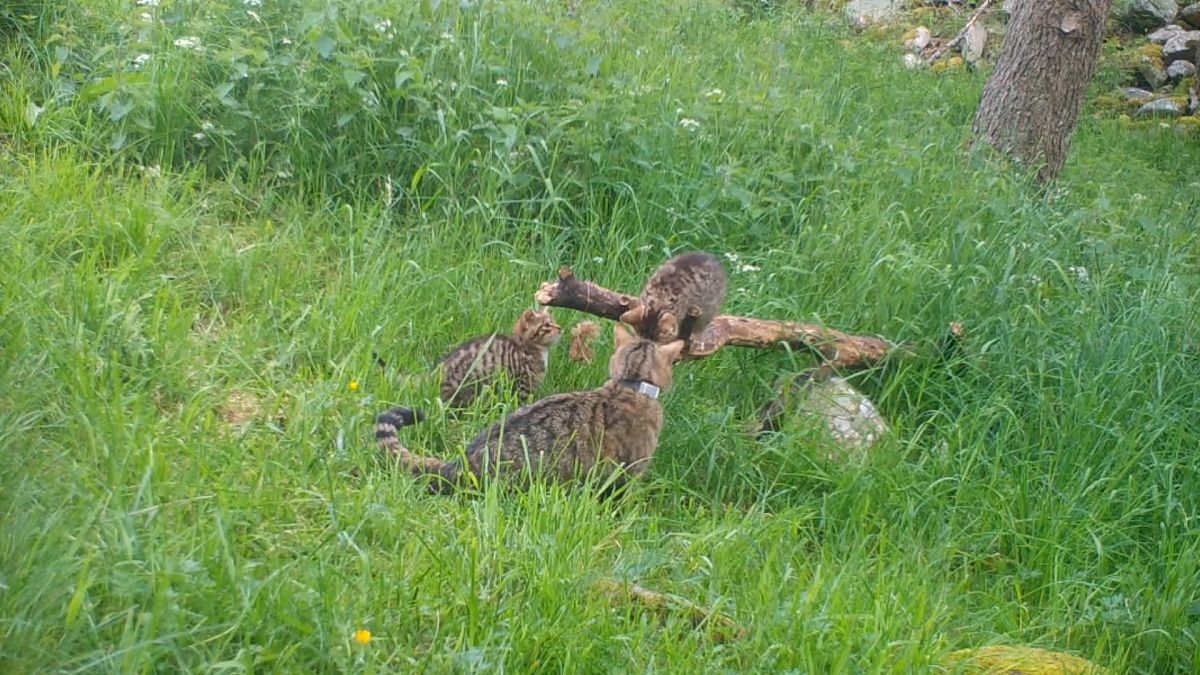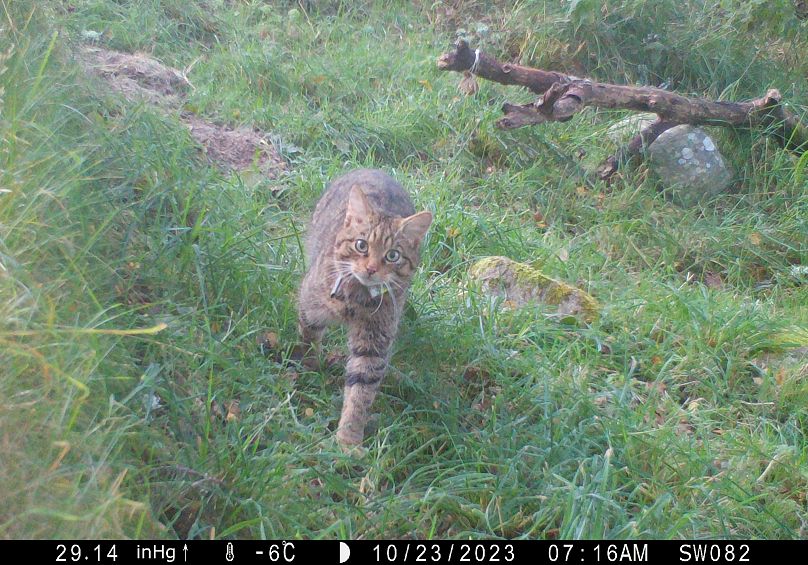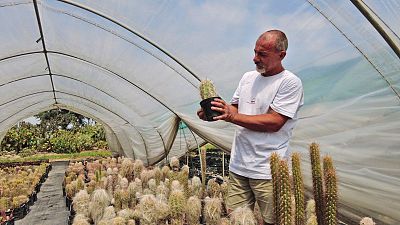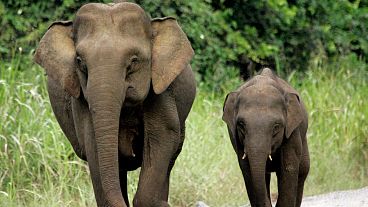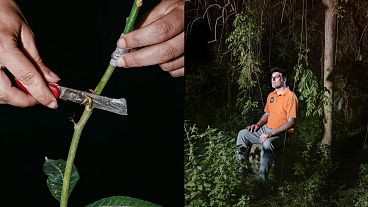The kittens were caught on camera after at least two female wildcats are thought to have given birth since their release.
Scottish wildcat kittens have been born in the Cairngorms National Park to captive-bred animals released last year.
Last summer 19 wildcats were released by the Saving Wildcats partnership, led by the Royal Zoological Society of Scotland. These incredibly elusive carnivores are the only native member of the cat family still found in the wild in Britain.
Since their release, the cats have been tracked using GPS radio collars.
At least two females have given birth since then, marking a significant milestone in the project’s efforts to restore the species in Scotland. They may be the first wildcats to be born outside of captivity in Scotland in more than five years.
“We suspected that some of the females had given birth when their movement and activity changed very suddenly but didn’t know for sure until footage of the kittens was captured on our cameras,” says Dr Keri Langridge, Saving Wildcats field manager.
“We didn’t dare to dream that we would have wildcat kittens in the first year of releases, and seeing those kittens on video was the most exciting moment of the project so far.”
The team have taken great care not to disturb the mother and kittens while carrying out this monitoring work which is being conducted under licence from public body NatureScot.
Bringing back the Scottish wildcat
Life in the wild for these brand-new wildcats won’t be easy.
“We have to bear in mind that life in the wild is hard and they will face many challenges. While the mortality rate for wildcat kittens in their first year of life can be high, we are hopeful for the future of these kittens,” says Dr Helen Senn, lead for Saving Wildcats.
“There is also the risk of interbreeding [hybridisation] between wildcats and domestic cats despite our efforts to trap, neuter, vaccinate and release feral domestic cats in the local area.”
She emphasises how important it is for wildcats’ survival that local people ensure their pet cats are neutered, microchipped and vaccinated.
Scottish wildcats were classified to be on the verge of extinction in 2018 - in part due to this interbreeding with feral domestic catsalongside habitat loss, disease and human activity. A 2019 report said they were close to being functionally extinct and their population was no longer viable.
While the team knows from the cats’ GPS collars that the two females did overlap with male wildcats and the kittens have the right characteristics, they don’t yet know their paternity. Once the kittens are old enough, attempts will be made to DNA profile them and figure out if any hybridisation has taken place.
“We are hopeful that they are indeed the offspring of male wildcats that were released last year - and the first of many more to come,” Senn adds.












